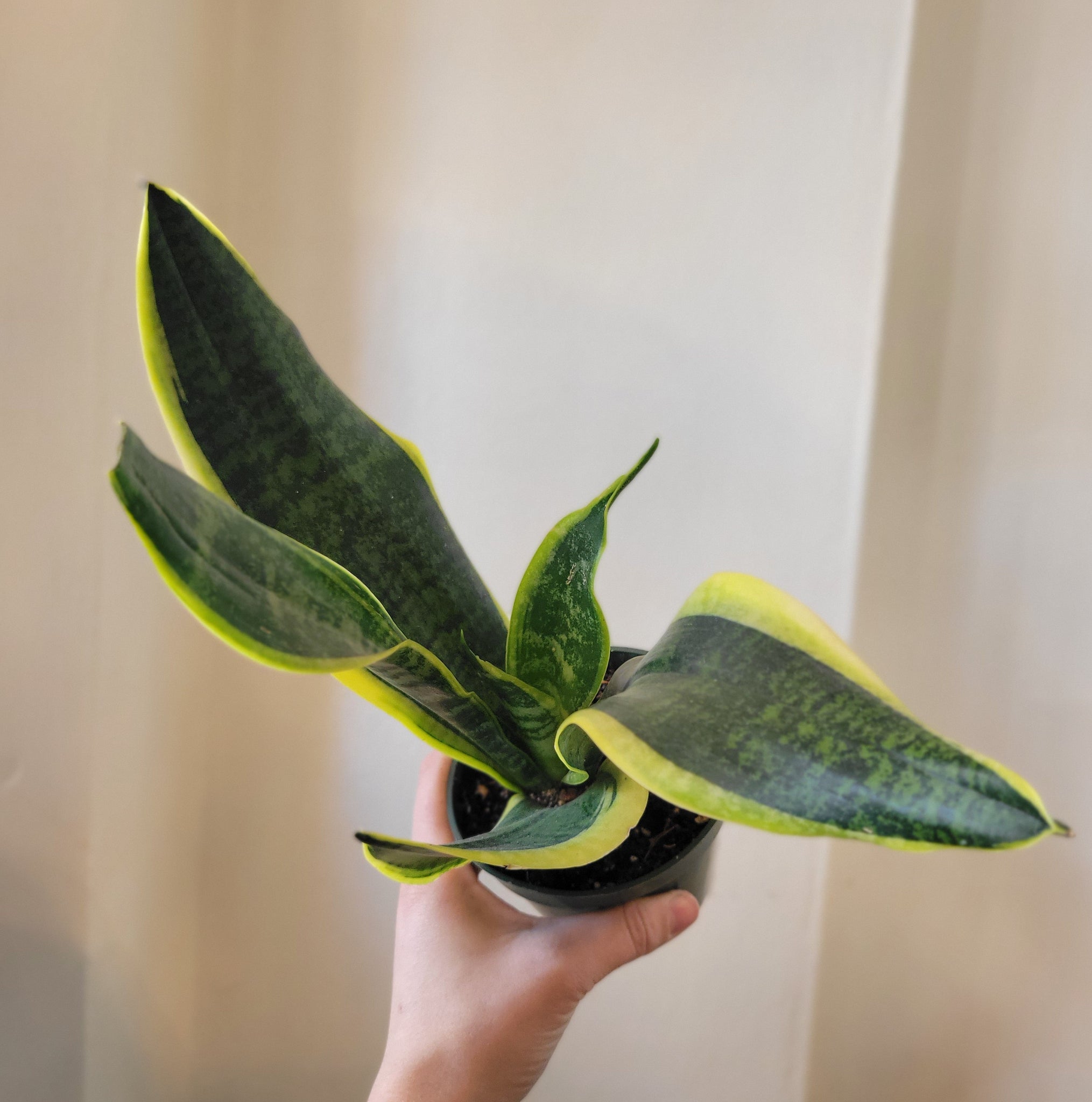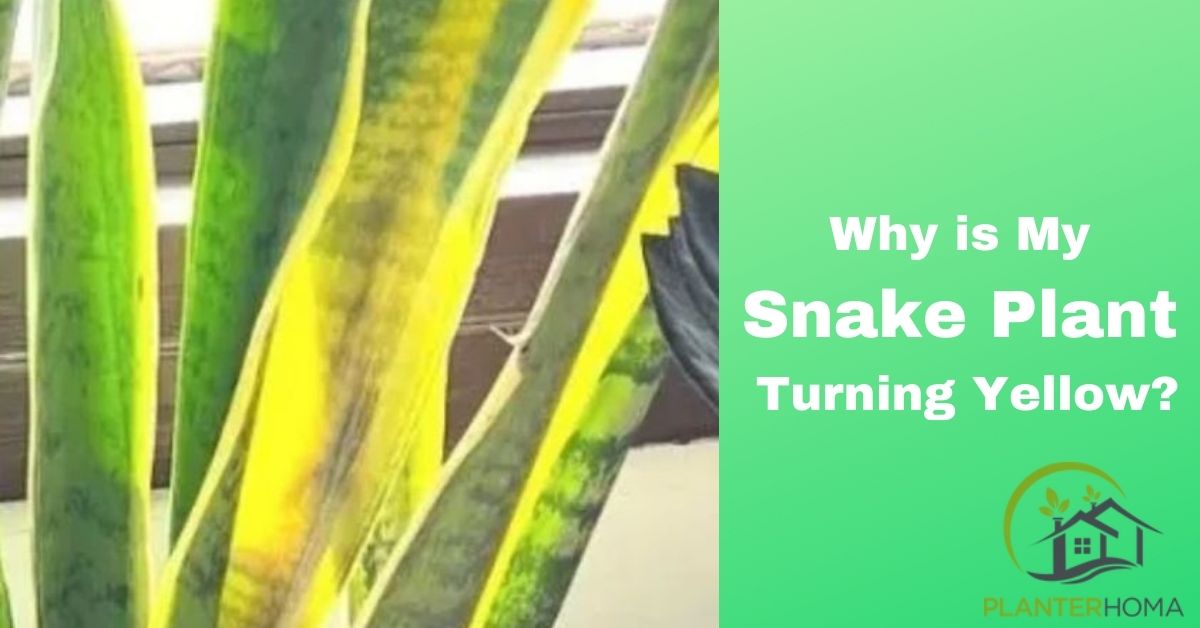Not known Details About Snake Plant Leaves Turning Yellow
Wiki Article
Unknown Facts About Snake Plant Leaves Turning Yellow
Table of ContentsThe Basic Principles Of Snake Plant Leaves Turning Yellow Not known Details About Snake Plant Leaves Turning Yellow 5 Easy Facts About Snake Plant Leaves Turning Yellow ExplainedThe Single Strategy To Use For Snake Plant Leaves Turning YellowSome Of Snake Plant Leaves Turning Yellow
If overwatering in snake plants is not corrected, the yellow patches of your mother-in-law's tongue plant will certainly transform dark brownish or black. To rule out any kind of various other sources of snake plant leaf yellowing, remove the plant from its pot and check the origins to see if they're soggy and have a foul smell.Only the leaves facing the window will certainly transform yellow for indoor serpent plants if photodamage is the concern. Origins have a higher likelihood of shedding when there is excess fertilizer and nutrients in the dirt. This then hinders the intake of water and vital nutrients, causing the mother-in-law's tongue plant to stress and place yellow leaves.
Here's just how to conserve a snake plant that's transforming yellow: Quit irrigating your snake plant until the dirt dries up totally if the yellowing results from overwatering. Return to watering, yet not greater than once per week. As a rule of thumb, stay clear of watering your serpent plant up until the top 2 inches of the dirt feel completely dry.

This will certainly help to increase water drainage rates, taking into consideration the high temperature level and sunshine problems throughout the day. Snake Plant Leaves Turning Yellow. Proper water drainage requires making use of a fast-draining dirt mix and a growing pot with drainage holes at the base. It is best to make use of a dirt mix that has perlite and crude sand for quick drain
7 Easy Facts About Snake Plant Leaves Turning Yellow Shown
There's a positive side as you can grow new plants by multiplying minority continuing to be leaves that are still healthy and balanced. References.Water is important in soaking up nutrients required for chlorophyll. Absence of water creates the decomposition of chlorophyll.
Without water, your plant can not soak up the mineral, some important for chlorophyll manufacture. Hence you may observe some yellowing or staining. Snake plants love a wet, not soggy, and you shouldn't permit the potting mix to dry out totally for a lengthy time. We recommend watering your serpent plant after the dirt dries entirely or most of it is completely dry.
A substantial one may create overwatering, and if it is too small, your plants will dry promptly. When watering, fill the dirt till excess water originates from drainage openings. Put any kind of water that accumulates on the dish. Lastly, never follow a snake plant watering session. Instead, always really feel to guarantee the potting mix is dry at the very least half-down the pot.
A Biased View of Snake Plant Leaves Turning Yellow
Obtain a rough price quote on just how typically you water your snake plant and established a pointer to prevent disregard. Light look here is necessary for the biosynthesis of chlorophyll in all flowering plants.You can likewise obtain chilly frameworks. In hot summertimes or throughout heat waves, take your plants to cooler areas. Don't put your plants near home heating system vents, radiators, fire places, or anything that discharges heat. Lastly, prevent temperature level sudden decreases and spikes. They will certainly stress your plant.
Stunted development is another indication. It triggers enzymes associated with chlorophyll development. An absence will certainly create in-between blood vessels yellowing on young fallen leaves. Also, there will be slow growth and sunken tan areas on the yellowed locations. When it is lacking, plants collect nitrates but stop working to use them to make healthy proteins.
Also though serpent plants have a document for being virtually difficult to eliminate, they nevertheless experience a fair share of issues. You are not the just one that has actually seen that your serpent plant's fallen leaves are transforming yellow. Snake Plant Leaves Turning Yellow. We will certainly examine the reasons snake plant leaves turn yellow and just how to manage it
Things about Snake Plant Leaves Turning Yellow

A damp container will certainly consider significantly much heavier than a dry pot, so at some point, you should be able to identify how dry your plant is based upon the mass of its container. Snake plant leaves might end up being yellow if you let your plant completely dry out, then wait until the dirt is completely dry before rewatering.
You require to think about greater than simply how usually you water serpent plants. You additionally have to consider what strikes the liquid when it is positioned in the pot. After watering your plant, you need to not let the origins remain in water for a over at this website couple of days due to the fact that this can cause origin rot.

The smart Trick of Snake Plant Leaves Turning Yellow That Nobody is Talking About
You just need to supply sufficient supply and guarantee proper drain to allow the added water to drain out. Not too much neither as well try this site little; there will be a suitable environment for fungi illnesses if there is any type of standing water. The snake plants can be sprinkled every 2 to 6 weeks.After positioning them in the early morning sunlight, you will discover that snake plants' development rate would raise and show up healthier. Putting them in the outdoor early morning sunshine will require more water, so once per week is sufficient. If the location receives too much sunlight and the surface really feels dry, you can water them two times per week.
Report this wiki page